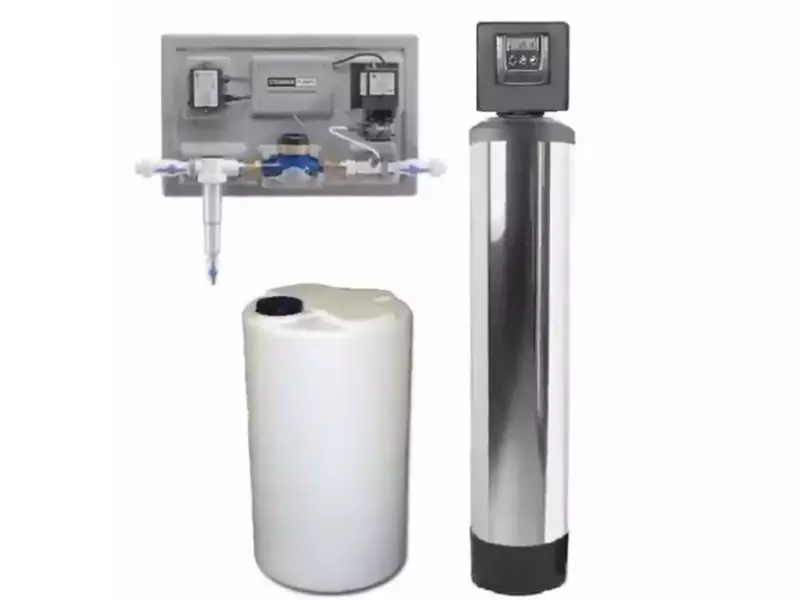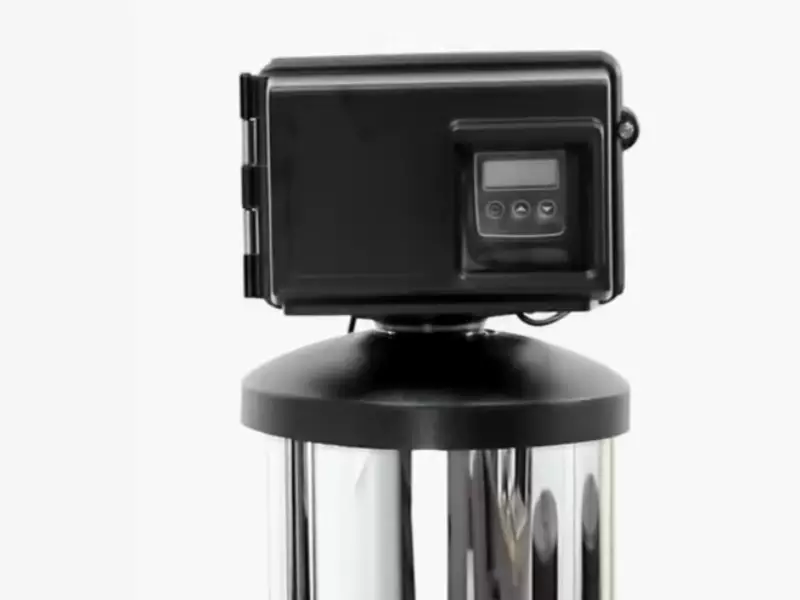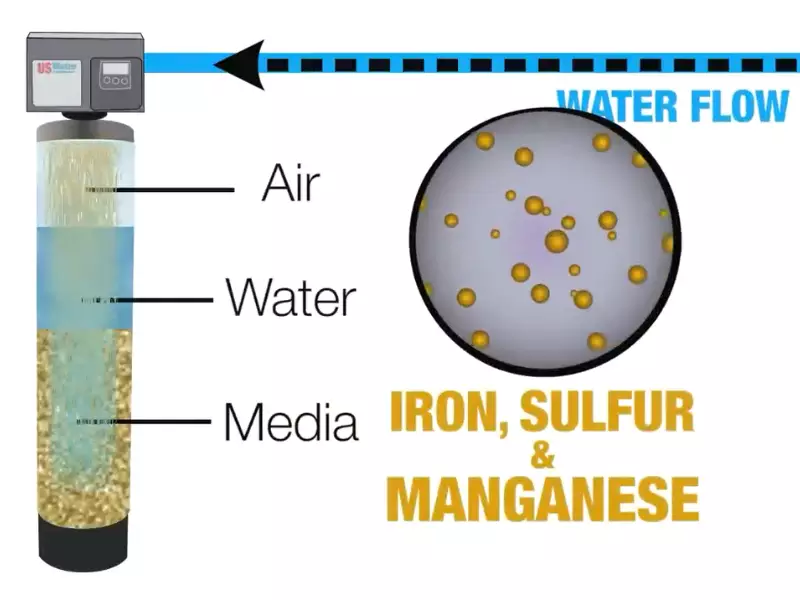Safe drinking water is a necessity, yet well water often contains contaminants that can affect its taste, appearance, and health risks. Iron, manganese, sulfur, and coliform are some of the common culprits. Treating and eliminating these elements ensures that well water remains pure and healthy for consumption.
For homeowners relying on well water, knowing how to address iron, manganese, sulfur, and coliform bacteria is crucial. Their removal not only improves water taste but also safeguards health.
Dealing with these contaminants requires specific strategies. Each possesses unique characteristics, demanding specialized treatment methods.

Iron Removal Methods
Iron is more than just a metallic taste or an unsightly stain on your favorite white shirt. High levels of iron can also clog pipes and damage water heaters. To combat this pervasive element, a myriad of solutions has been crafted over the years.
Filtration Systems
Filtration systems, especially designed to target iron, are a common go-to.
Activated Carbon Filters
These are primarily effective for treating low levels of iron. The process involves water passing through activated carbon, which acts like a sponge and absorbs iron particles.
Birm Filters
Functioning without the need for chemical regenerants, Birm filters make use of the oxygen in water to convert ferrous iron, which is water-soluble, to ferric iron, which is water-insoluble. This process aids in the oxidation of iron, which can then be easily filtered out.
Greensand Filters
These filters are infused with potassium permanganate, which aids in the oxidation of the iron. Once oxidized, the iron particles become large enough to be trapped by the filter, resulting in cleaner, clearer water.
Water Softeners
Water softeners aren’t just about tackling hard water. They can also assist in removing ferrous iron through an ion exchange process. During this process, iron ions are replaced with sodium ions, rendering the water both softer and iron-free.

Tackling Manganese in Well Water
While not as commonly discussed as iron, manganese can be just as pesky a contaminant. Beyond staining, excessive manganese consumption has been linked to health issues like cognitive disorders.
Oxidation Filtration
Much like iron, manganese can be tackled using oxidizing filters.
How It Works
When water imbued with manganese comes into contact with the oxidizing filter media, the manganese transforms into a solid. This solid can then be captured by the filter and prevented from flowing through your taps.
Sequestration
This process does not remove manganese but renders it unnoticeable. Chemicals are introduced to water, binding with manganese. This prevents the manganese from causing discolorations or reacting with soap, but it remains soluble in the water.
Sulfur: Detecting and Dealing
That ‘rotten egg’ smell is more than just an inconvenience. High sulfur levels can corrode metals and even stain your clothes or fixtures.
Aeration
Exposing sulfur-laden water to air is a simple yet effective method to tackle the issue.
Oxygen’s Role
When sulfur in water is exposed to oxygen during the aeration process, it gets converted into a form that’s easier to filter out. By increasing the oxygen content in the water, hydrogen sulfide gas gets transformed into elemental sulfur, which then precipitates and can be filtered out.
Activated Carbon Filters
Besides their role in iron and manganese removal, activated carbon filters are champions in eradicating the rotten egg smell synonymous with sulfur. By trapping and neutralizing hydrogen sulfide, they ensure your water is odor-free.
Coliform Bacteria: Health Implications and Removal
The presence of coliform bacteria in water can be a red flag. While they might not directly cause diseases, their presence can indicate that other pathogens are lurking in your water.
UV Light Treatment
Employing ultraviolet rays to neutralize bacteria is both efficient and environmentally friendly.
The Science Behind It
As water passes through a chamber equipped with UV lights, the ultraviolet rays penetrate harmful pathogens present in your water, including coliform bacteria. This exposure damages the DNA of the bacteria, rendering them harmless as they can no longer reproduce.

Chlorination
A tried and tested method, chlorination involves introducing chlorine to water. This chemical effectively kills bacteria, viruses, and other microorganisms. However, post-treatment, it’s vital to filter out the residual chlorine to avoid its characteristic taste and potential health risks.
Boiling
In emergency scenarios, or if you’re on a tight budget, boiling water can be a handy method. By raising the water temperature to its boiling point and maintaining that for a few minutes, most bacteria, including coliform, can be killed. However, this method might not be feasible for large volumes of water or as a permanent solution.
Best Practices for Well Maintenance
Prevention is often better than cure. Ensuring your well stays free of contaminants in the first place is a smart strategy.
Routine Testing
This is the cornerstone of well maintenance. Regularly analyzing your water’s quality can:
- Aid in early contaminant detection.
- Help devise effective treatment strategies.
Periodic Treatment and System Updates
Water treatment systems are not a ‘set it and forget it’ affair. Regularly:
- Update your filtration systems.
- Replace parts showing wear and tear.
- Clean and sanitize systems to prevent bacterial growth.
Recognizing Signs of Contamination
Often, our senses can alert us to water issues before they become severe. A sudden change in taste, an unusual smell, or a shift in the water’s clarity could all be indicators of potential contamination. Addressing these early can save both time and money in the long run.
Frequently Asked Questions
How often should I test my well water?
It’s recommended to test well water annually, especially for coliform bacteria. If there are known contaminants, more frequent testing might be necessary.
Can I remove these contaminants without professional help?
While some treatments like boiling or basic filters can be done at home, others, especially those involving chemicals or complex systems, should involve professionals.
Are there any natural methods to treat well water?
Yes, certain plants and natural biofilters can help purify water to an extent. However, they might not be as effective against all contaminants.
Conclusion
Ensuring clean and safe well water is not a luxury but a necessity. Addressing contaminants at their core, whether it’s iron, manganese, sulfur, or coliform bacteria, requires a mix of knowledge and the right tools.
Prioritizing regular maintenance and staying updated about the water quality can make all the difference. After all, pure water is fundamental to health and well-being.
Finally, remember that every well is unique. Its geographical location, depth, and surrounding environment play a part in determining its water quality. Addressing its specific challenges is the key to enjoying clean, refreshing well water every day.